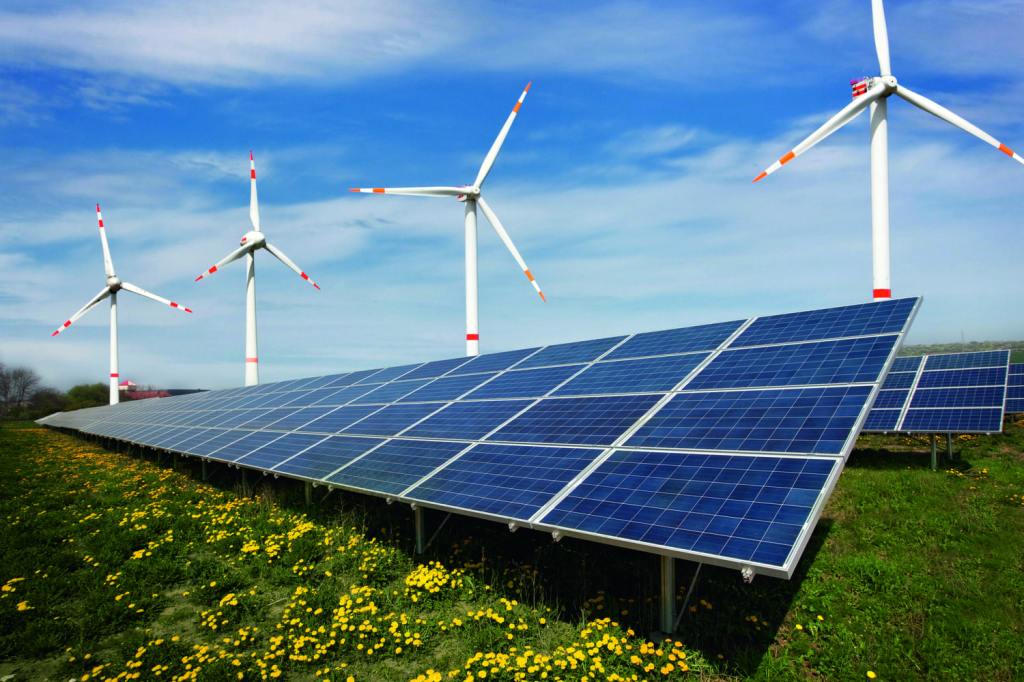It’s absolutely true.
We caught a bit of grief in the comments section of the original Fact Snack on this one.
Seems that some folks from Germany took exception to this fact, as they don’t remember getting any checks in mail.
Perhaps that’s because most of us only get a bill every month, and this only happened for several hours over the course of a day.
Here’s a price index screen grab that one of our readers posted in the comments:
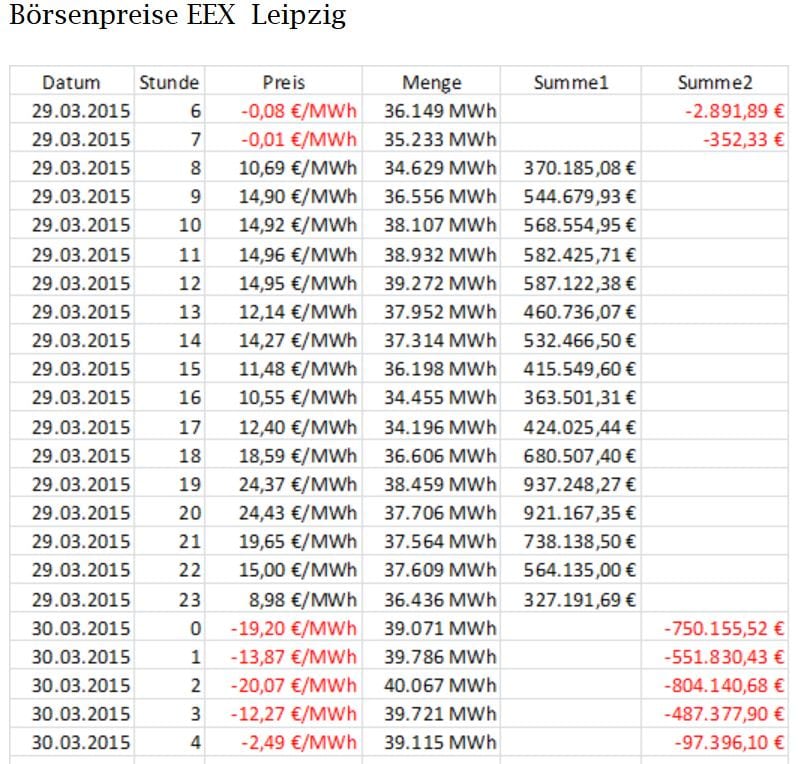
Photo Credit: Leipzig/Mattias Svederberg
The red stuff is free money for everybody but the power company.
Here’s a more comprehensive chart with both conventional and renewable output and consumption, along with the price:
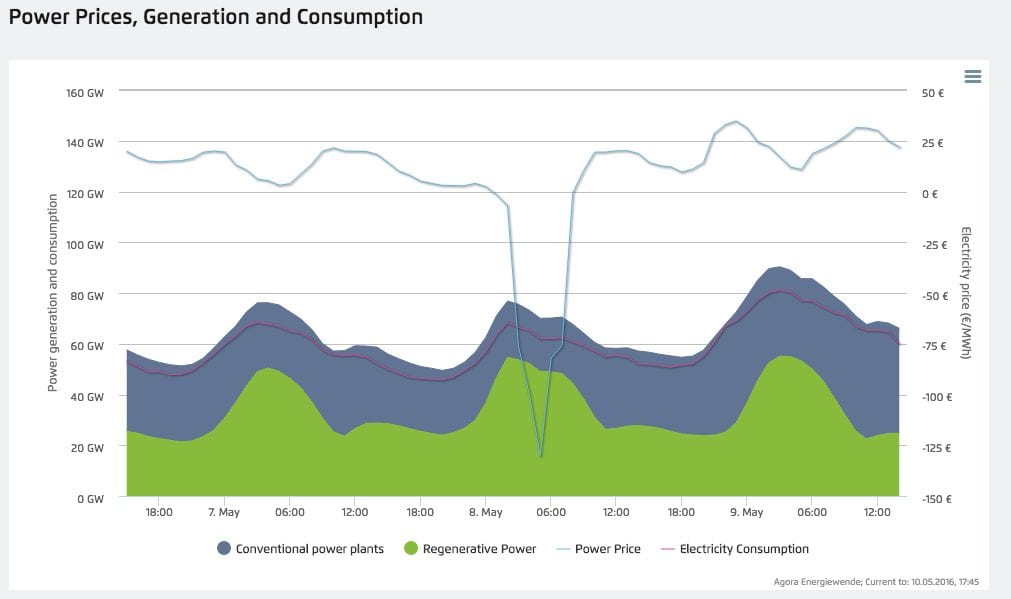
Photo Credit: Agora Energiewende
Even though it’s quite obvious in chart form, almost nobody would have noticed, because their bills kept adding up from the five days before and the more than three weeks after.
More on that chart and on renewables in Europe and the US after the jump.

Photo Credit: Agora Energiewende
Some other things worth noting about the above graphic, and the situation in general:
- It happened in the middle of the day, during peak-usage. That means the more they used, the more they saved.
- That’s good news for the average user and the reputation of renewable energy, but it also meant that major non-renewable plants got paid to produce energy using carbon-intensive fuels, as conventional power plants continued to produce during this time.
- It’s still good news, overall, especially as Germany continues to expand their portfolio of renewable resources and the infrastructure that allows them to respond to price/production fluxes more nimbly.
- Germany has pledged to be 100% renewable by 2050.
- Denmark makes Germany look like amate*rs when it comes to renewable energy. On a windy day, they can produce up to 140% of their national energy needs from wind turbines.
- When they do, they export (sell off and make money from) a major chunk of their surplus to Germany.
Here’s a day in the life of Denmark’s windmills:
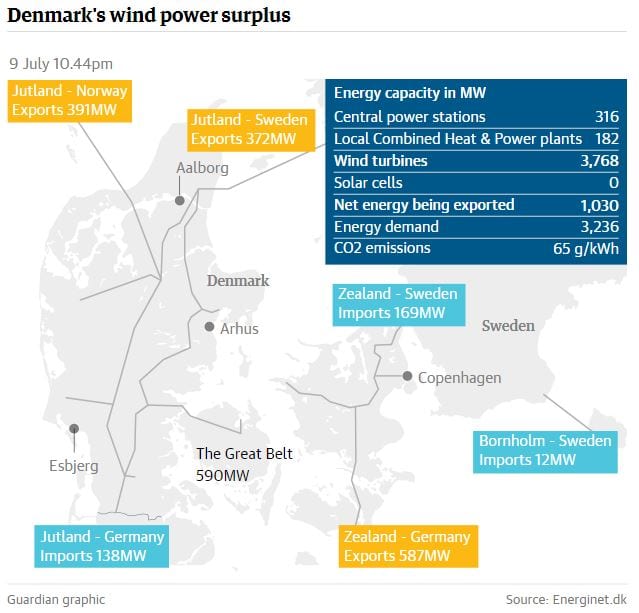
Photo Credit: The Guardian/Energinet
Meanwhile, the UK withdrew government support for offshore windfarms last year, and the US barely cracked 10% renewable consumption in 2015.
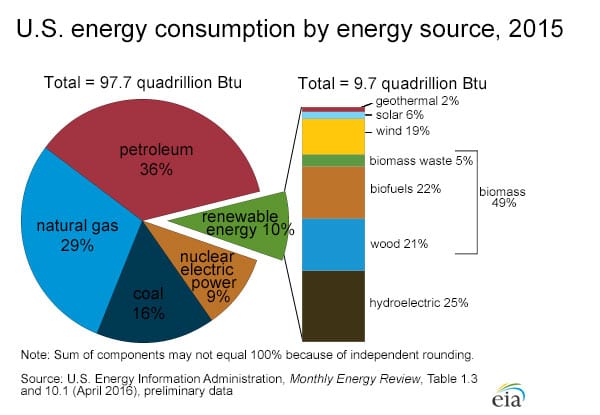
Photo Credit: US Energy Information Association
Production was a little bit better, in that 13% of energy produced (as opposed to consumed) in the US was renewable, but that’s still pretty low, and no where near what would be necessary to stave off the worst effects of global climate change.
Want more Fact Snacks?
We’ve got a whole book full of them:

Photo Credit: Amazon
Hundreds of your favorite facts, such as:
- Your pupils dilate when you’re looking at someone you love.
- Octopuses are older than dinosaurs.
- Caffeine withdrawal is officially a mental disorder.
- The only breed of dog to be mentioned by name in the Bible is the greyhound.
- Your heart is so powerful that it can squirt blood 30 feet across the room.
- Dr. Seuss’s first book was rejected 27 times.
Buy it now on Amazon:
Did You Know?: A collection of the most interesting facts, stories and trivia…ever! Kindle Edition
Sources: Rejected Princesses, National Women’s History Museum, National Baseball Hall of Fame, LA Times, CNN, Baseball Almanac: 1, 2, MLB.com: 1, 2, NY Post, Wikipedia: 1, 2, 3, 4, Sports Illustrated, Smithsonian Magazine
Want more articles?
Check these out:
- Anne Frank Made Her Last Diary Entry on August 1st, 1944. This Is What it Said…
- The First Woman to Run for President Was Called ‘Mrs. Satan’… This Is Why
- The Real Story of Elizabeth Báthory: History’s Most Prolific Female Serial Killer
- Here’s How Seemingly Random Events Can Lead to One of the Most Famous Photos in American History
- The BBC Halloween Hoax That Traumatized a Nation…and Killed Someone?
- These 16 Vintage Medical Photos Are Both Creepy and Fascinating
- In 1957, Five Guys Stood Underneath a Nuclear Blast… on Purpose.
- The Most Boring Day in History Has Been Identified. By a Computer.
- The Horribly Racist History of the Cakewalk

